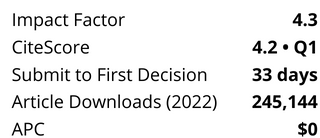Disinfection efficacy was evaluated in four pilot-scale systems that were operated at four water utilities across North America. Through this approach, factors which are difficult to simulate in a laboratory environment (such as water properties, process conditions, climatic conditions) were assessed, in order to determine their influence on disinfectant effectiveness. The results from this study show that a critical level of disinfectant residual (Ccrit) was necessary for inhibiting heterotrophic bacterial growth to less than 500 CFUml−1 in the effluent of these pilot-scale systems. When free chlorine was the disinfectant, this critical residual concentration was found to be approximately 0.6 mg L−1. A total chlorine concentration of 1 mg L−1 resulted in low bacterial counts with chloramine disinfectants, though approximately 10–20% of this residual was found to be comprised of slowly degradable organic chloramines which are less effective as disinfectants. A higher ductile iron pipe corrosion rate was observed with a free chlorine disinfectant as compared with chloramines. The results from this study are likely to be of interest to water utilities responsible for the operation and optimization of drinking water distribution systems.
Skip Nav Destination
Article navigation
November 2008
This article was originally published in
Journal of Water Supply: Research and Technology-Aqua
Article Contents
Research Article|
November 01 2008
Disinfectant efficacy in distribution systems: a pilot-scale assessment
Graham A. Gagnon;
1Department of Civil & Resource Engineering, Dalhousie University, Halifax NS, Canada
E-mail: graham.gagnon@dal.ca
Search for other works by this author on:
Hélène Baribeau;
Hélène Baribeau
2Carollo Engineers, Pasadena, CA, USA
Search for other works by this author on:
Simon O. Rutledge;
Simon O. Rutledge
1Department of Civil & Resource Engineering, Dalhousie University, Halifax NS, Canada
Search for other works by this author on:
Robert Dumancic;
Robert Dumancic
3Department of Civil Engineering, University of Waterloo, Waterloo, ON, Canada
Search for other works by this author on:
Adrian Oehmen;
Adrian Oehmen
4REQUIMTE/CQFB, Department of Chemistry, Universidade Nova de Lisboa, Caparica, Portugal
Search for other works by this author on:
Christian Chauret;
Christian Chauret
5Department of Biology, Indiana University Kokomo, Kokomo IN, USA
Search for other works by this author on:
Susan Andrews
Susan Andrews
3Department of Civil Engineering, University of Waterloo, Waterloo, ON, Canada
Search for other works by this author on:
Journal of Water Supply: Research and Technology-Aqua (2008) 57 (7): 507–518.
Article history
Received:
October 24 2007
Accepted:
December 26 2007
Citation
Graham A. Gagnon, Hélène Baribeau, Simon O. Rutledge, Robert Dumancic, Adrian Oehmen, Christian Chauret, Susan Andrews; Disinfectant efficacy in distribution systems: a pilot-scale assessment. Journal of Water Supply: Research and Technology-Aqua 1 November 2008; 57 (7): 507–518. doi: https://doi.org/10.2166/aqua.2008.103
Download citation file:
Sign in
Don't already have an account? Register
Client Account
You could not be signed in. Please check your email address / username and password and try again.
Could not validate captcha. Please try again.




%20cropped.png?versionId=5947)